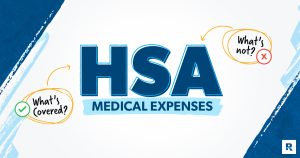Key takeaways
- A 1.5 percent cash back card can help you earn rewards on every purchase while enjoying benefits like extended warranties, travel insurance and no foreign transaction fees.
- But not all 1.5 percent cash back cards are created equally, varying by annual fee, welcome bonus, additional cash back categories and redemption opportunities.
- Carefully weigh each card against your spending habits, credit rating and financial goals when comparing these flat-rate cards.
Cash back credit cards earn rewards in several different ways, with some offering a generous flat cash back rate on all purchases and others offering more cash back in specific or rotating categories.
Cards that earn a flat rate of 1.5 percent cash back on all general purchases can fall into either category, meaning that they can give the cardholder a boosted flat rate of rewards plus rotating category rewards or simply the flat rate of 1.5 percent on its own.
These types of flat-rate rewards cards can come with intro APR offers and welcome bonuses, both of which can make their offers even more valuable. And many 1.5 percent cash back credit cards also come with no annual fee. If you’re interested in one of these cards, check out our guide for how to choose the right 1.5 percent cash back card for you.
How to choose the right 1.5 percent cash back card for your wallet
Before you start looking at credit card applications, follow these steps to narrow down your options:
-
The best rewards credit cards require good to excellent credit, yet you can find 1.5 percent cash back cards for consumers with fair credit, poor credit or no credit as well. Ultimately, it’s helpful to know your credit score before you apply so that you put your energy toward those with a higher chance of approval.
You can check your credit score for free by using Experian’s free credit monitoring service, which provides your FICO 8 credit score in exchange for sending you personalized offers and ads, or by using a free service through another bank or credit card issuer. Capital One, Discover and American Express all offer ways to check your credit score for free, even if you’re not a cardholder.
-
The strongest cash back credit cards are designed for people with good to excellent credit, offering 0 percent intro APR offers for purchases and balance transfers as a perk. These offers can typically last 12 months or longer. Not only can these intro APRs help you save interest as you pay down large purchases, but they can also help you consolidate existing debt and pay it down faster.
If you want a card with a 0 percent intro APR offer, you’ll have to keep that in mind when shopping for a 1.5 percent cash back card. If you don’t have any debt to consolidate or a large purchase planned, this shouldn’t be as important to you.
Keep in mind: Intro APR offers last for a limited time, with variable APRs that apply after the intro expires. Have a plan for paying off any balances subject to the card’s regular APR before it takes effect.
-
Cards with a flat rate of 1.5 percent cash back can also come with boosted rewards in other categories, like travel booked via an issuer’s travel portal. Compare each card’s rewards structures to decide whether the extra boosted rewards are worth it for you.
You should also learn about the options available to you for redeeming your rewards. Some cards offer considerably more rewards flexibility than others. Some common rewards redemption options include:
- Statement credits
- Gift cards
- Merchandise
- Travel via an issuer’s travel portal
- Charitable donations
- Shopping redemptions via platforms like Amazon or PayPal
The redemptions you can make might also come down to the rewards program ecosystem your card is part of. For example, a 1.5 percent cash back card from Chase could be awarded as Ultimate Rewards points that you can transfer to your Chase travel rewards card.
-
Many cash back credit cards offer benefits like purchase protections against damage or theft, extended warranties or even basic travel insurance protections.Despite this, you’ll want to make sure you pick a 1.5 percent cash back card that offers perks you can actually use. If you rarely travel, for example, don’t let benefits like travel insurance tempt you into a card that isn’t the right fit for you.
-
Cards can come with plenty of fees, most notably annual fees and foreign transaction fees. Many cash back credit cards don’t charge an annual fee, with key exceptions when it comes to cards with high rewards rates and perks or those designed for people with poor to fair credit.
Before you pay an annual fee for a 1.5 percent cash back credit card, make sure you can get enough value in return to justify the card’s cost. This usually means earning enough rewards to offset the costs or getting extra value from any perks or statement credits that it offers.
If you plan to use your card for international travel or for purchases online made in a foreign currency, you’ll be better off with a card that doesn’t charge foreign transaction fees. Capital One credit cards never charge foreign transaction fees, for example.
Don’t forget to take your card’s annual percentage rates (APRs) into account, either. If you wind up carrying a balance on your card, the purchase APR will determine how much interest you have to pay, so make sure you’re comfortable with the APR range listed on the card application.
-
Finally, after deciding which cards have favorable rewards rates and benefits, compare their welcome offers. While some cards require you to spend $1,000 or more within the span of a few months to earn a bonus, others require just $500 in purchases over three months.
Ideally, pick a rewards credit card that offers the best welcome offer that you can easily earn by paying for regular purchases and bills with your card. If you don’t think you can meet the welcome offer’s spending requirements, remove it as a factor weighed into your decision.
-
Many cash back cards, including 1.5 percent cash back cards, offer preapprovals or prequalifications without performing a hard inquiry on your credit reports. Instead, issuers typically use a soft credit inquiry to decide whether you’re prequalified or preapproved.
You can go directly to the issuer’s website to get preapproved or use a third-party tool like Bankrate’s CardMatch. When using CardMatch, you’ll get personalized offers that match your credit score range. Once you’ve found out whether you’re preapproved, you can make a more informed decision about whether you want to apply for the card.
Keep in mind: Preapproval and prequalification does not guarantee that an issuer will approve you for a credit card. It simply lets you know whether you have a higher chance of being approved. The final say will still be up to the issuer, which will typically perform a hard credit inquiry before deciding.
The best 1.5 percent cash back cards
Now that you’re ready to choose the best cash back card for your wallet, consider starting with our top picks. Here’s a breakdown of some of the best 1.5 percent cash back cards from each major issuer:
| Card | Rewards | Welcome bonus | Credit required | Annual fee |
|---|---|---|---|---|
| American Express Cash Magnet® Card* | 1.5% cash back on all purchases (terms apply) | Earn a $150 statement credit after you spend $1,000 or more in purchases with your new Card within the first 3 months of Card Membership. | Good to excellent | $0 |
| Bank of America® Unlimited Cash Rewards credit card | 1.5% cash back on all purchases, with the ability to rise to up to 2.62% based on Preferred Rewards membership status | $200 online cash rewards bonus after you make at least $1,000 in purchases in the first 90 days of account opening. | Good to excellent | $0 |
| Bank of America® Unlimited Cash Rewards Secured credit card* | 1.5% cash back on all purchases | N/A | Limited credit, no credit or poor credit | $0 |
| Capital One Quicksilver Cash Rewards Credit Card | 1.5% cash back on all purchases and 5% cash back on hotels and car rentals booked through Capital One Travel | Earn a one-time $200 cash bonus after you spend $500 on purchases within 3 months from account opening | Good to excellent | $0 |
| Capital One QuicksilverOne Cash Rewards Credit Card | 1.5% cash back on all purchases and 5% cash back on hotels and car rentals booked through Capital One Travel | N/A | Fair | $39 |
| Chase Freedom Unlimited® | 5% cash back on travel booked through Chase Travel℠, 5% cash back on Lyft rides (through March 2025), 3% back on dining and drugstore purchases and 1.5% cash back on other spending | Earn an extra 1.5% on everything you buy (on up to $20,000 spent in the first year) — worth up to $300 cash back. That’s 6.5% on travel purchased through Chase Travel℠, 4.5% on dining and drugstores, and 3% on all other purchases. | Good to excellent | $0 |
The bottom line
The best 1.5 percent cash back credit cards offer generous rewards and come with no annual fees, yet they vary quite a bit from there. For example, some of the cards that offer 1.5 percent cash back also offer higher rewards rates in additional categories, whereas others only offer a flat rate and are geared toward consumers with fair credit or no credit.
It’s also worth noting that there are cash back credit cards that offer a flat rate of 2 percent cash back with no annual fee required, which could be another option for you if you’re not concerned with earning other boosted rewards. Compare cash back credit cards based on their rewards rates, features and fees to find the best fit for your spending habits and financial needs.
Information about the American Express Cash Magnet® Card and Bank of America® Unlimited Cash Rewards Secured credit card has been collected independently by Bankrate. Card details have not been reviewed or approved by the issuer. The Bank of America content in this post was last updated on August 8, 2024.
Read the full article here










